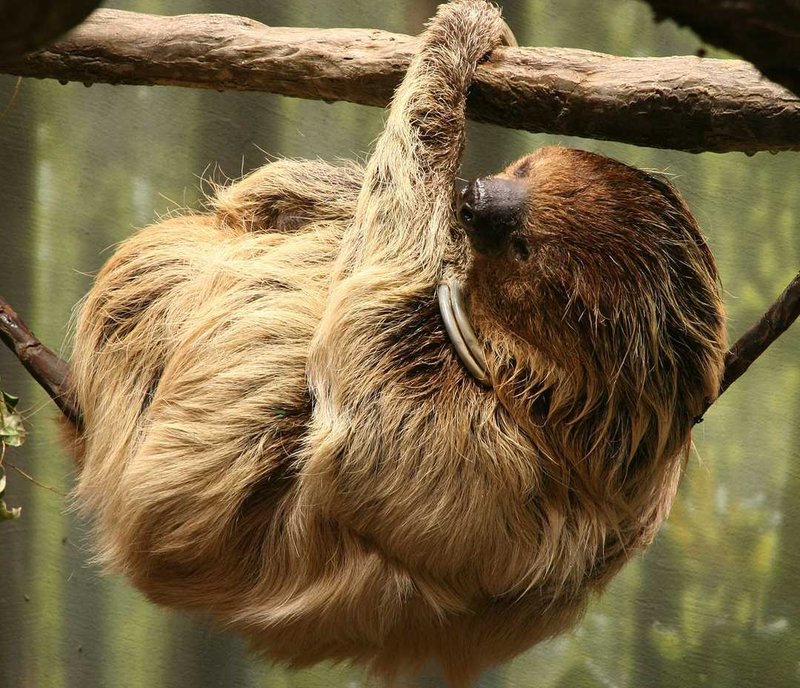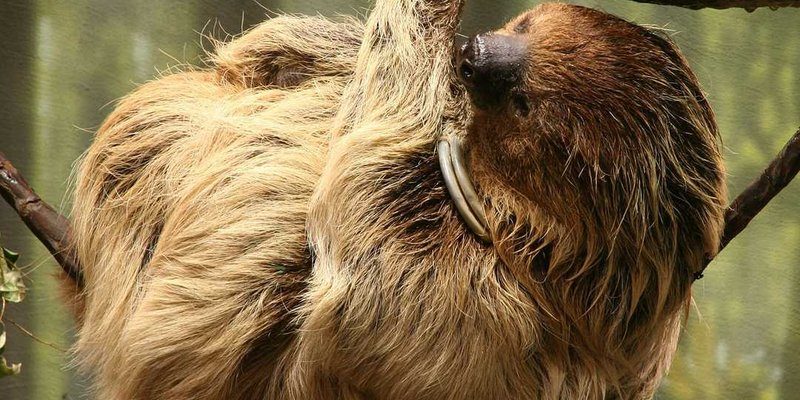
You might be surprised to learn that sloths have a fascinating ancestry that dates back millions of years. They’re part of a group called Xenarthra, which also includes anteaters and armadillos. Strap in as we unravel the twists and turns of how the two-toed sloth has adapted to its environment, evolved over time, and carved out a niche in our world.
A Brief Overview of Sloths
Before we delve into the history of the two-toed sloth specifically, let’s explore what makes sloths unique. Sloths are divided into two main categories: the two-toed sloths (genus Choloepus) and the three-toed sloths (genus Bradypus). This classification comes from the number of claws they have on their front limbs.
Sloths are known for their slow movements and a diet primarily consisting of leaves. This gives them a low-energy lifestyle. Imagine living life in slow motion; that’s basically how sloths roll! Their metabolic rate is low, allowing them to survive on a diet that many other animals would find insufficient.
Interestingly, sloths are not just sluggish creatures; they have built-in defenses. Their fur grows in a counterclockwise direction, which allows algae to grow on them. This not only provides some camouflage but can also host other tiny creatures, like insects, creating a whole ecosystem on their bodies!
The Ancestry of Sloths
Now, let’s take a step back in time. Sloths have a truly ancient lineage that traces back to the Pleistocene epoch, around 2 million years ago. Their ancestors were quite different from the sloths we see today. They were massive creatures, like the Megatherium, commonly known as the giant ground sloth. These giants roamed the land, measuring over 13 feet long and weighing up to 4 tons!
Their size and lifestyle were a stark contrast to today’s small, tree-dwelling species. You might be wondering how such a huge animal evolved into the small two-toed sloths we see today. The answer lies in adaptation. As their environment changed post-Ice Age, these massive sloths faced extinction, paving the way for smaller, more nimble relatives.
The survival of the fittest is a real concept here. Two-toed sloths adapted to their arboreal lifestyle, becoming more suited for life in the trees. They developed a more specialized diet, focusing on leaves that provide less energy. This might sound counterintuitive, but it allowed them to thrive in their specific ecological niche.
Two-Toed Sloths vs. Three-Toed Sloths
Diving a bit deeper, it’s helpful to contrast two-toed sloths with their three-toed cousins. While they share a common ancestor, their paths diverged, leading to some fascinating differences.
For starters, two-toed sloths belong to the Choloepus genus, while three-toed sloths fall under Bradypus. This distinction isn’t just about toe count; it has deeper implications. Two-toed sloths are generally larger and more robust. They also have a more varied diet and can adapt better to changing food sources, giving them an advantage in fluctuating environments.
Another interesting point is their behavior. Two-toed sloths are more active during the day compared to three-toed sloths, which are almost entirely nocturnal. You might picture a sloth as always hanging and napping, but two-toed sloths can be surprisingly energetic during the day, climbing and foraging for food.
Let’s also consider their body structure. Two-toed sloths have elongated limbs, making them excellent climbers. Their slightly different muscle and bone structure allows for more flexibility in movement, which is essential for navigating through trees while searching for food.
Adaptations to Their Environment
One of the most remarkable aspects of the two-toed sloth is its adaptations to life in the trees. These adaptations have developed over millions of years, allowing them to thrive in their natural habitats.
First off, their limbs are long and strong, perfect for hanging onto branches. Their claws are also curved, providing a strong grip on tree trunks and limbs. This is crucial since they spend nearly their entire lives hanging upside down, munching on leaves and sleeping.
Their slow metabolism is another fascinating adaptation. It allows them to survive on a low-energy diet consisting of different types of leaves. Surprisingly, some of these leaves are toxic to other animals. This gives two-toed sloths a unique advantage, as few predators can compete with them for food.
Finally, let’s not forget their fur. The unique direction in which their fur grows not only supports algae growth but also provides some insulation. This can be beneficial during cooler nights in the rainforest, allowing them to maintain body temperature while sleeping.
Conservation Status and Challenges
As cute and fascinating as two-toed sloths are, they face significant challenges in the wild. Habitat loss is one of the most pressing issues, primarily due to deforestation for agriculture and urbanization. As their habitats shrink, their survival becomes increasingly precarious.
Additionally, climate change poses a threat as well. It can affect the availability of their food sources, putting further strain on their already limited resources. As global temperatures rise, the ecosystems in which sloths live are expected to change, potentially leading to threats they’ve never encountered before.
Conservation efforts are underway, focusing on protecting their habitats and creating awareness about the importance of preserving biodiversity. Organizations work tirelessly to replant trees and create wildlife corridors that allow sloths and other animals to move freely in their natural habitats.
It’s important to remember that while two-toed sloths are emblematic of the rainforest, their survival is intertwined with the health of their ecosystems. Protecting these environments benefits numerous species beyond just sloths.
The Future of the Two-Toed Sloth
Looking ahead, the future of the two-toed sloth remains uncertain. However, there’s hope. Public awareness of their plight is growing, thanks to social media and documentaries showcasing their unique lives. People are increasingly drawn to their adorable appearance and fascinating behaviors.
Ecotourism is also playing a role in their conservation. Tourists visiting rainforests are increasingly looking for ways to support local conservation efforts. This can provide much-needed funds to protect sloth habitats while promoting sustainable practices in local communities.
Ultimately, the future of the two-toed sloth hinges on our collective actions. If we prioritize environmental protection and work to mitigate climate change, we can ensure that future generations will continue to marvel at these slow-moving creatures.
The evolutionary journey of the two-toed sloth is a story of resilience and adaptation. From their giant ancestors to their current gentle, tree-dwelling existence, these creatures remind us of the diverse adaptations life can take over millions of years. Their unique lifestyle, coupled with the challenges they face today, presents a compelling narrative about survival and conservation.
So, next time you think of sloths just hanging around, remember the incredible history behind their evolution. Understanding their story can inspire us to protect their world—one slow, deliberate step at a time.

